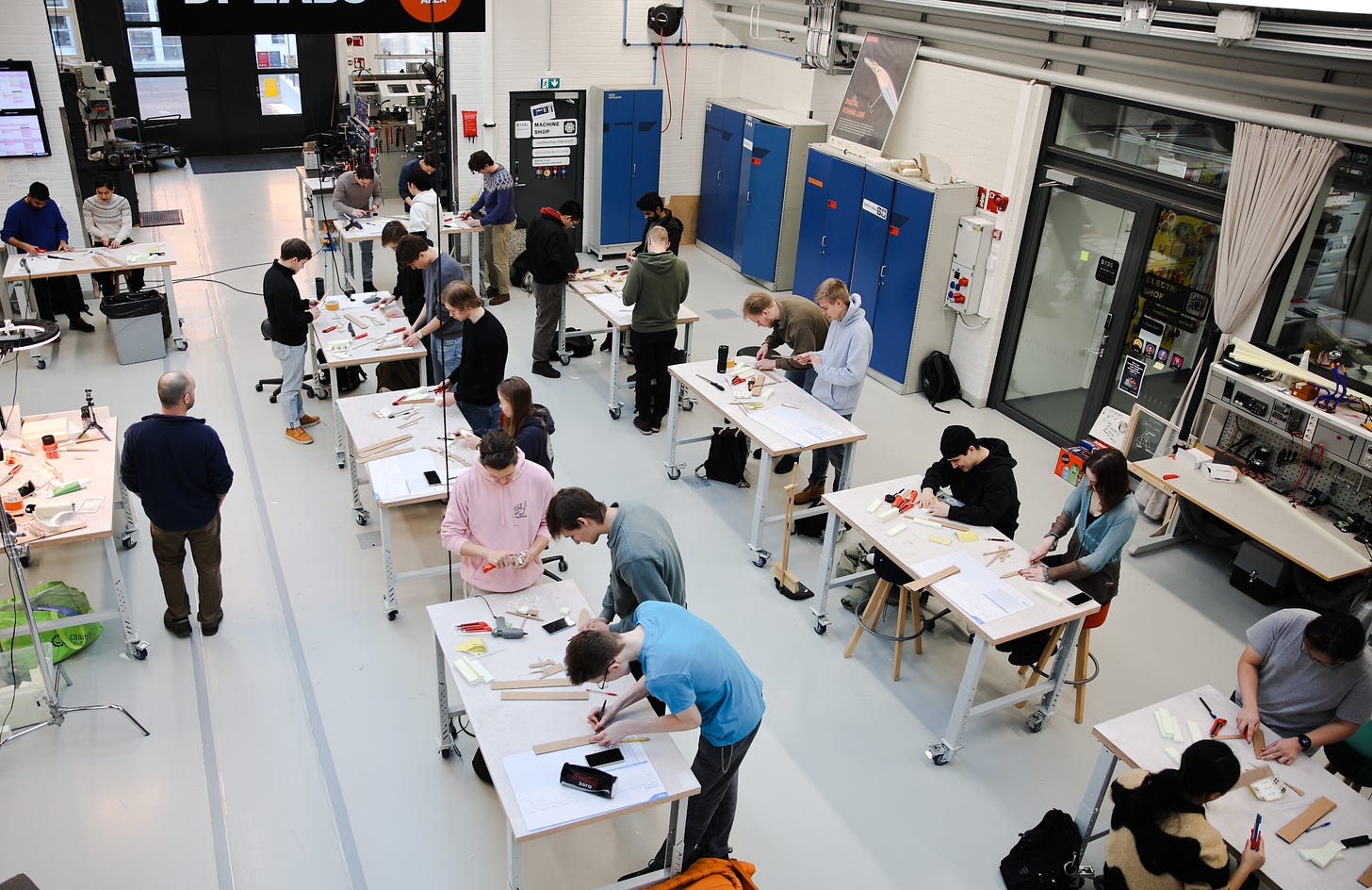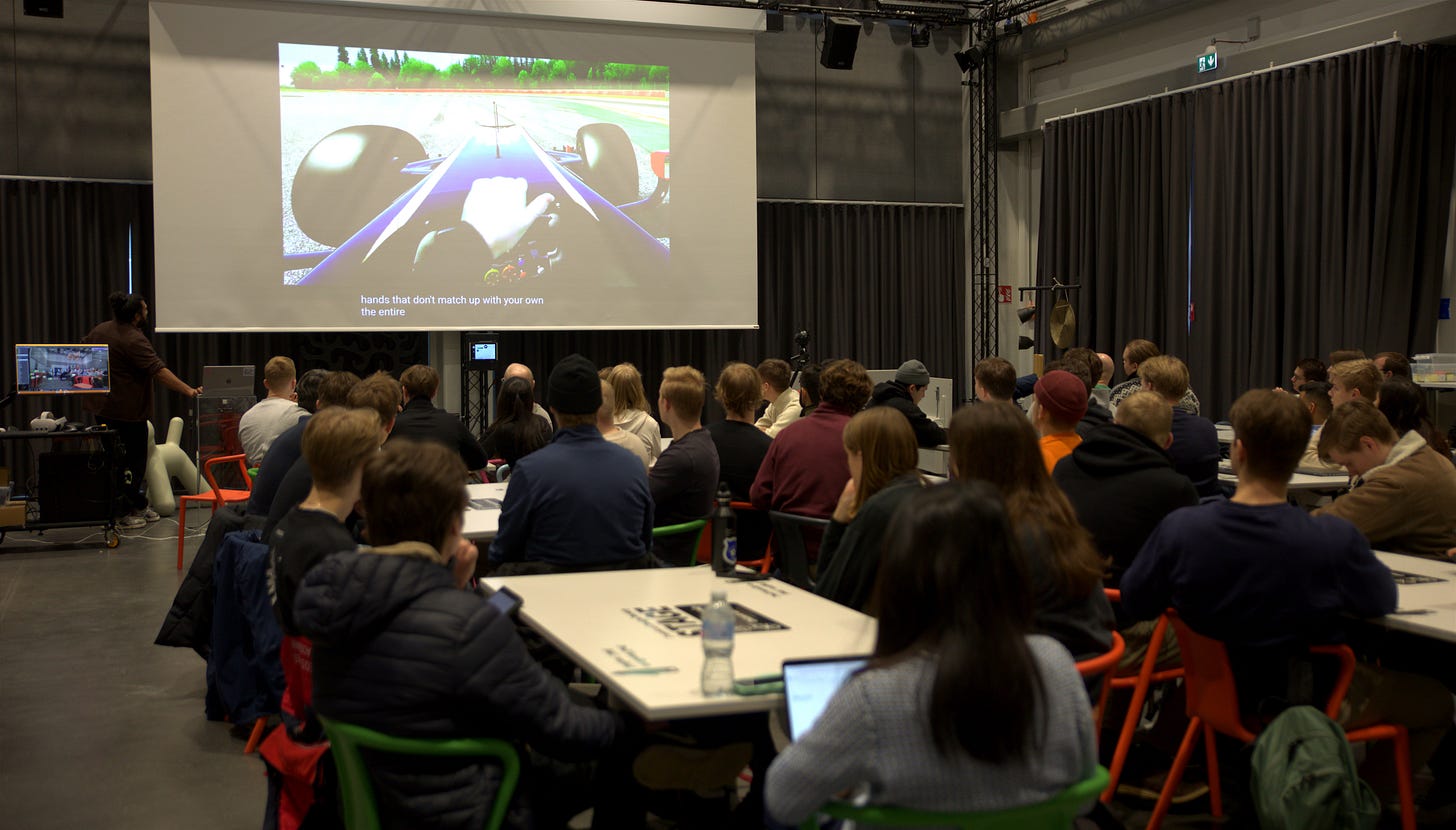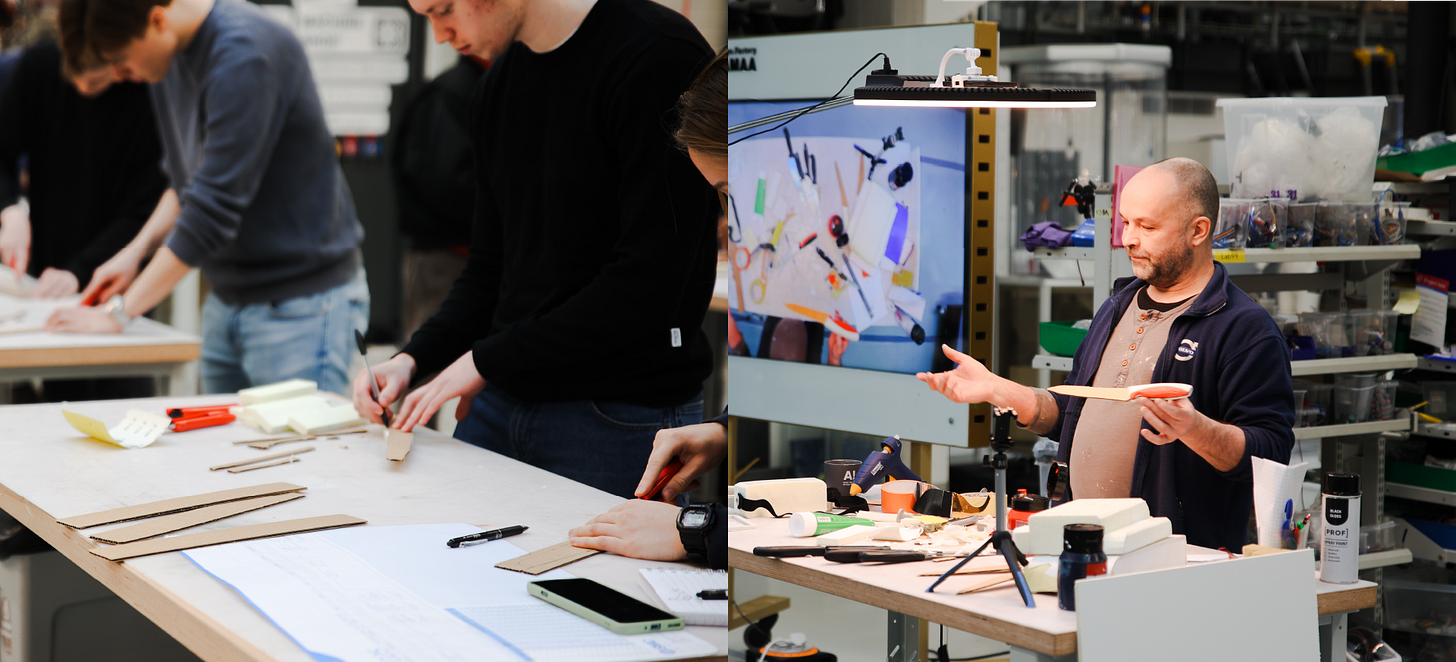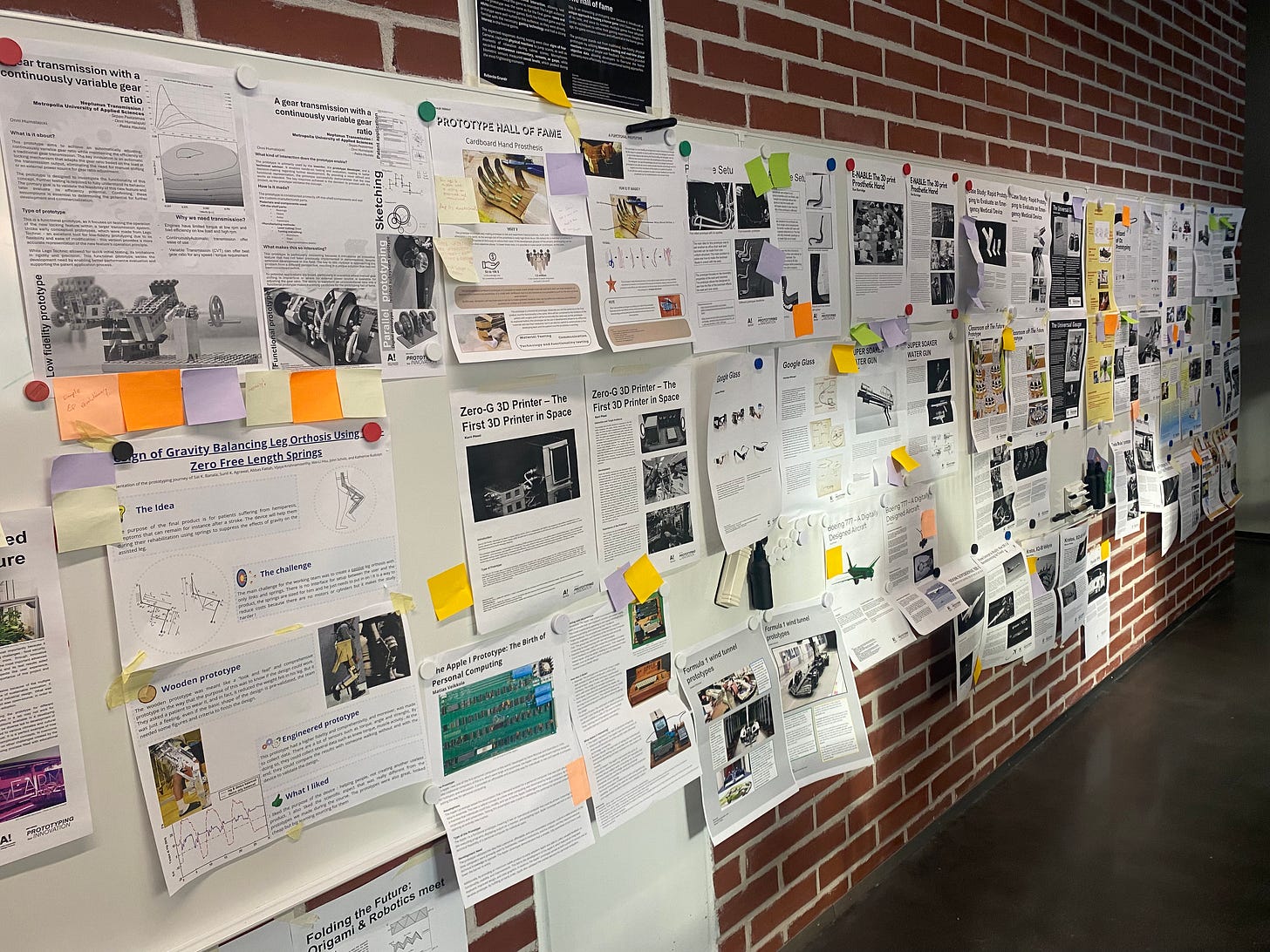Are you ready to take your prototyping skills to the next level? At Aalto Design Factory, the Prototyping for Innovation course is designed to equip students with the knowledge and hands-on experience needed to create meaningful prototypes that drive innovation. This course doesn’t just focus on building, it emphasizes why you build and what you need to learn from the process.
What makes this course special?
Too often, prototyping falls into two common pitfalls: it’s either done too late, or it becomes an exercise in building for the sake of building. This course shifts the focus to learning through prototyping while showcasing a variety of low-threshold techniques and tools.
“With this course, we wanted to highlight the importance of keeping in mind what you are trying to learn through prototyping while also showcasing a wide range of fairly low-threshold techniques, tools, and examples of how this can be done in practice.” -Tua, Course teacher
By blending theory with hands-on practice, students develop a solid foundation in prototyping principles that can be applied across various industries. Unlike many other prototyping courses, this one focuses on the decision-making process rather than just the final outcome. Students learn to determine what to prototype, how to do it effectively, and when to integrate it into the development process for maximum impact. This approach ensures students are well-prepared for problem- and project-based courses where strategic decision-making is essential.
“We have many courses in which prototyping plays a significant role, and we wanted to offer a course that improves the students' readiness and skills for meaningful prototyping.” -Senni, Course teacher
The teaching team includes Senni, Tua, and Sushant, bringing together expertise in engineering design, industrial design, and industrial management, which helps students to see the project work from multiple angles and explore topics out of their own expertise.
Learning from industry experts
While this course does not work on company projects directly, students gain insights from top professionals through visiting talks and company excursions. This year, students learned from R&D professionals and leaders at Aivan, Arabia, EpiHeart, Safera, Surgify and Vaisala. This exposure ensures that students understand real-world applications of prototyping in different industries.
Each week consists of two sessions - one theory-focused and one hands-on practical workshop. Students engage in visualization techniques, paper prototyping for UI design and foam modeling, to name a few of the methods. By moving from low-fidelity prototyping to prototyping in industry, the course builds students’ confidence and competence in making and testing prototypes efficiently.
Student’s perspective: Albin’s take
We asked Albin, a Mechanical Engineering student with a focus on product development and also a former course participant, to share his experience:
What was the most valuable part of the course? “The reading materials introduced a new way of thinking about prototyping in product development. One key insight was that the best prototype is the one that, as cheaply and quickly as possible, answers the questions the designer seeks to answer.”
How has this course influenced your approach to problem-solving? “I now try to fit as many tests as I can into a single prototype to save time and resources.”
What skills did you gain from the course? "I developed a high-level understanding of how to think about prototypes and their functions. There are different types of prototypes that serve a purpose in the product development effort, but they should all serve a purpose."
How do you see yourself applying what you learned in the future? "This course will help me create clearly defined prototypes that answer specific questions rather than trying to do everything at once. It was also eye-opening to see how different industries and professions view prototypes differently. What one field values as a quick and effective prototype might be considered as a pile of junk that you are too embarrassed to show at the office."
Any advice for future students? “If you enjoy making things and tackling problems in a structured way, this course is for you. However, if you prefer just talking about problems rather than solving them hands-on, you might find it challenging.”
Are you ready to prototype your way to innovation? Join the course next year and experience it for yourself!
-Kisses & hugs, ADF Staff





